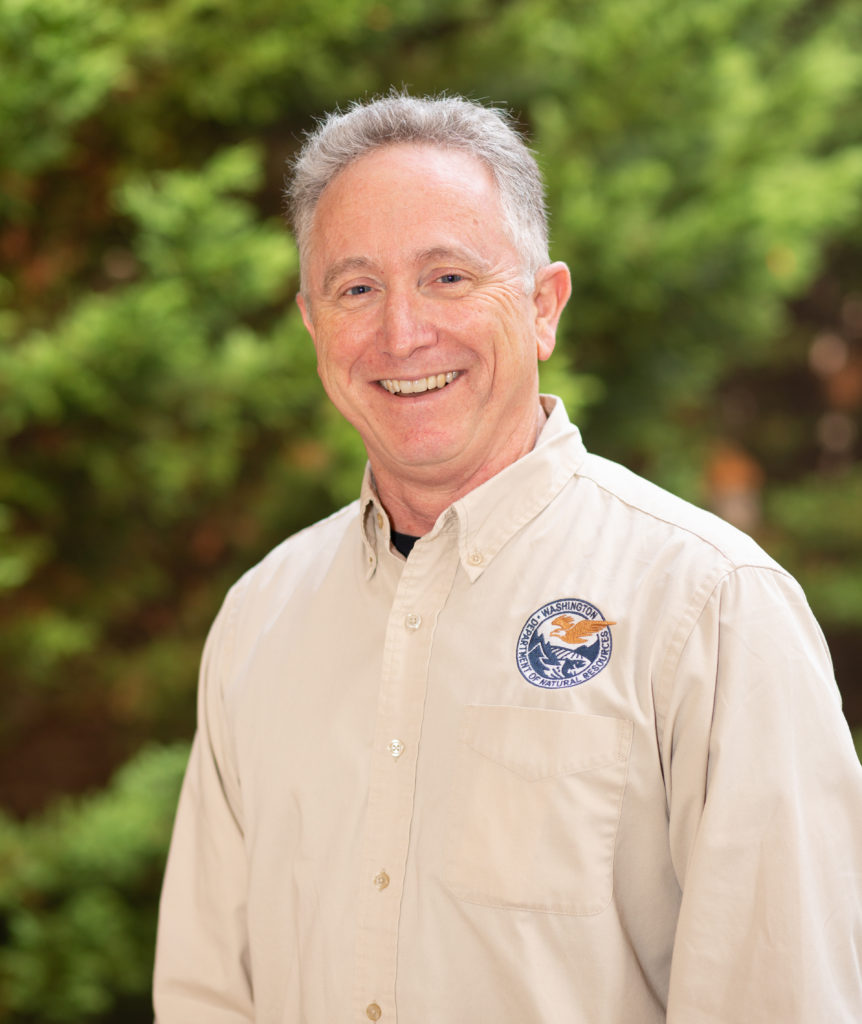At a virtual hearing held by the Senate Committee on Energy and Natural Resources today, Washington State Forester George Geissler testified on behalf of NASF as to the status of wildfire suppression operations and policies given current COVID-19 considerations.

The COVID-19 pandemic has posed significant challenges for wildland fire professionals, including, but certainly not limited to, setting standard operating procedure for suppressing wildfires. The Centers for Disease Control and Prevention’s guidance for social distancing are not necessarily compatible with the existing systems for addressing wildland fire. From training and recertifications, to public evacuation plans, to feeding, sheltering, and transporting firefighters: nearly every aspect of wildfire suppression operations require adjustment in order to avoid COVID-19 exposure and outbreaks. If an outbreak were to occur in a fire camp, for example, it would not only endanger firefighters, their families, and other community members, but it would also impact the nation’s emergency response capabilities.
Realizing the need to address this issue, the National Multi-Agency Coordinating (NMAC) Group activated three Area Command Teams on March 17, 2020 and tasked them with developing COVID-19 Wildland Fire Response Plans for each of the wildfire geographic areas across the country. These ten Geographic COVID-19 Wildfire Response Plans ensure there is a standardized approach to managing wildland fires on an interagency basis that protects life, property, and resources and reduces exposure to COVID-19. The Area Command Teams worked with the chair of each Geographic Area Coordinating Group and States engaged in this process through the Coordinating Groups.
NMAC has also provided an Interagency Checklist for Mobilization of Resources, assessments on incident feeding options for this year, and Airtanker Temporary Home Base Direction. Additional resources for multiagency use were developed and updated by the National Wildfire Coordinating Group (NWCG) Emergency Medical Committee. The Infectious Disease Guidance for Wildland Fire Incidents provides recommendations for Incident Management Teams (IMTs) to be equipped to prevent, plan for, recognize, and respond to infectious outbreaks. Guidance and tools such as these are helpful in providing a consistent interagency message while still allowing local and state agencies the space to develop protocols that makes sense for their specific circumstances.
Due to the increased emphasis on aerial resources this year, specific guidance has been released to ensure the safe and strategic use of these resources. NWCG’s National Interagency Aviation Committee in coordination with the Fire Management Board and NMAC developed and released the NWCG Standards for Aviation Operations. NMAC has also released direction on surge capacity Type 1 and Type 2 helicopter mobilization, which details the 36 surge capacity helicopters added by the USDA Forest Service (Forest Service) to the National Exclusive Use Helicopter fleet. They are available for 90-day contracts and will be located at initial host bases identified by the Geographic Areas. Reassignment of these resources will be determined strategically by examining the Predictive Services outlook by Geographic Area, National and Geographic Area Preparedness Levels, and National and Geographic Area Priorities.
Since March, wildland fire managers have learned how best to implement COVID-19 protocols and practices. Some initial guidance was found to be impractical or to increase risk. For instance, simple changes, such as driving separate vehicles to an incident, can make parking at an incident difficult and cause response delays. There is also concern that more response vehicles on the road may increase the number of traffic accidents. Translating medical guidance on mask wearing to the field has also been a challenge. Complaints about wearing masks on the fire line was common, due to inhibiting communication, breathing, and situational awareness. Oftentimes these complaints describe personnel functioning within their module, which is similar to a household, where the guidance had not suggested mask use. Clearly communicating these nuances has surfaced as a need based on reports from the field. These post fire reports have been shared widely across the wildland fire community, including internationally. It is this open information sharing across all agencies that improves our management practices.
While some reports have highlighted issues in the application of these protocols, other reports relay that other methods are successfully keeping wildland firefighters safe. A firefighter presented with a fever during screening at the end of an incident in Utah, and though the test did eventually come back negative, they were able to successfully test and quarantine the firefighter and isolate their engine module while they awaited the results. In my own state of Washington, the DNR had established screening protocols that ultimately identified a COVID-19-positive firefighter. Through tracing and isolation, we managed to prevent the spread of the virus in that crew module. In Florida, two IMT deployments and a third fire, which required the deployment of multiple strike teams, resulted in a total of 234 personnel tested, all of which were negative. These reports highlight that the protocols in place are being executed properly, and so far, have been successful. All agencies need to continue to support these efforts by ensuring firefighters have the proper equipment to implement safety protocols.
The full test of Geissler’s testimony, including links out to citations, additional resources, and standing protocols, is linked below. This hearing was recorded; an archived video is available here.

